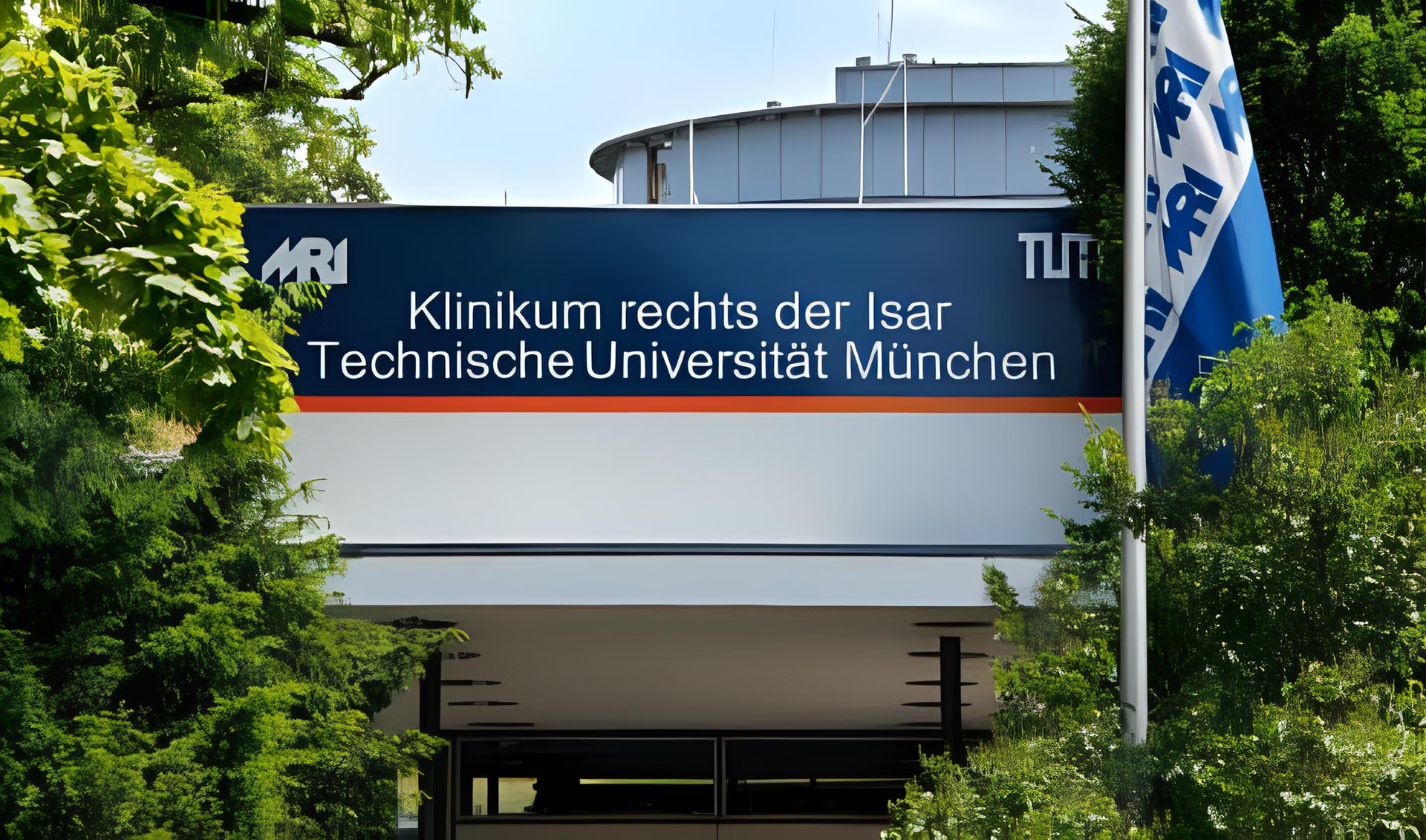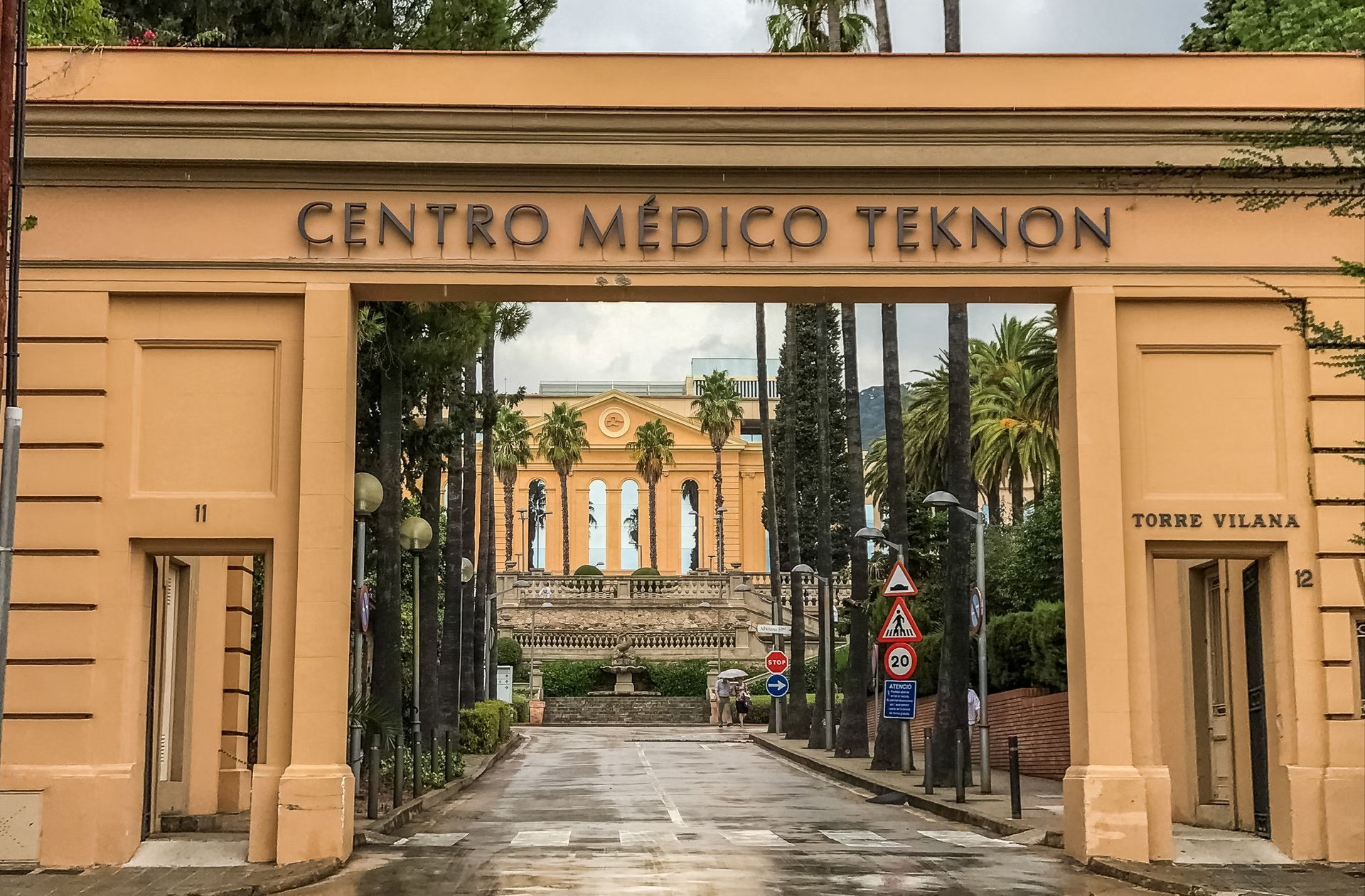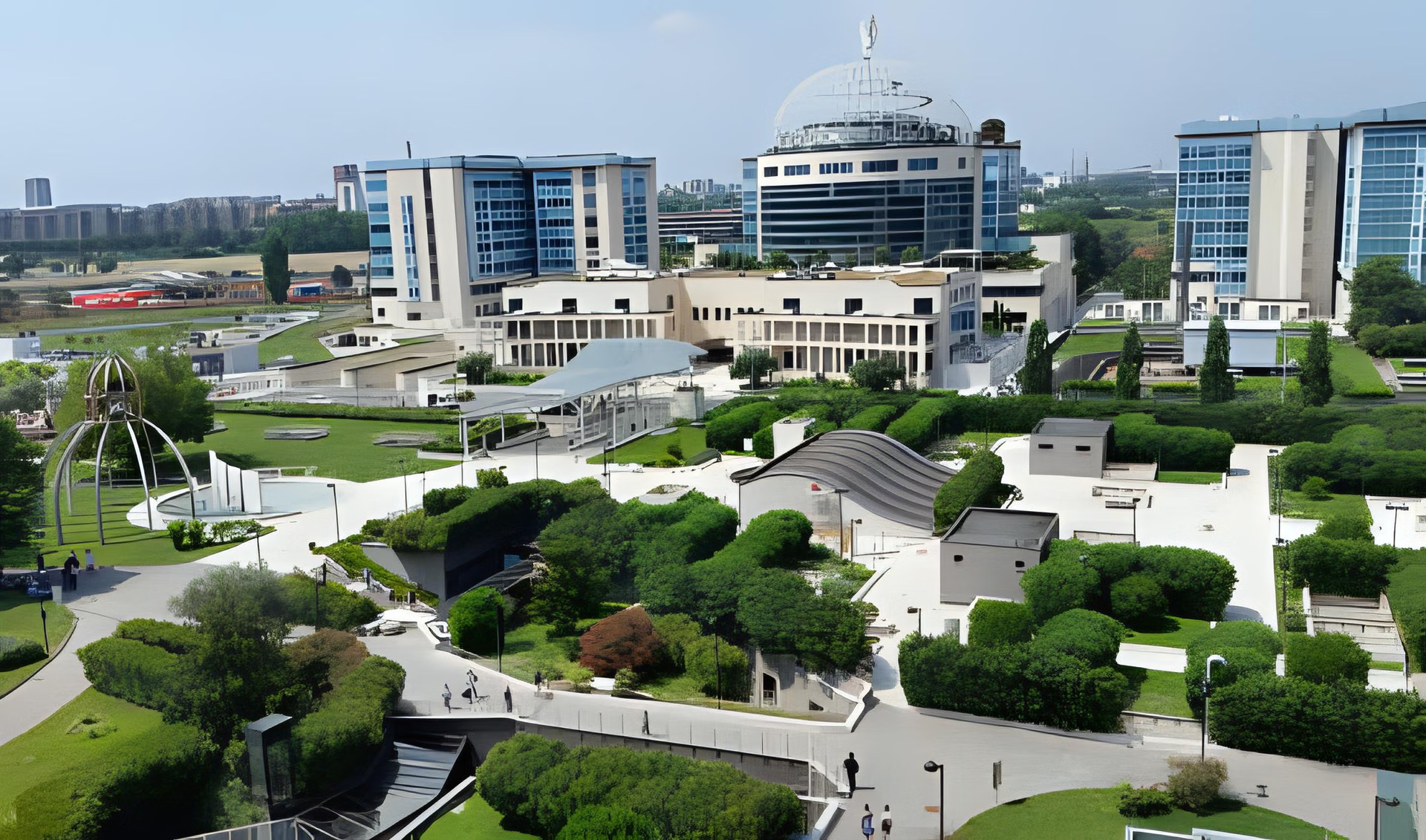Gallbladder Cancer Guide

Up to 85% of patients with gallbladder cancer also have gallstones.
About 4 000 new cases of gallbladder cancer are verified yearly in the USA.
Gallbladder tumors represent up to 80-95%of all hepatic-biliary tract cancers.
Only 30% of patients receive a diagnosis of gallbladder cancer before surgery.
 Gallbladder's anatomy and functions
Gallbladder's anatomy and functions
Gallbladder is a small sack-like organ located below the right lobe of the liver. It's an important part of the hepatic-biliary tract. In most cases, the organ is pear-shaped and about 7-10 cm long. The gallbladder is typically hollow inside and stores bile, but it can sometimes contain gallstones.
Here is the list of all gallbladder functions
- Production of bile
- Storing bile produced by the liver
- Concentrate bile
- Releasing the bile into the duodenum
Bile is mainly produced in the liver and flows down the ducts into the gallbladder. The gallbladder stores up to 30-60 ml of gall on average. When bile reaches the organ, the process of concentration begins. First, Electrolytes and water are removed from the gall, making it 3-10 times more potent. Then, when food with high amounts of fats reaches the digestive tract, the gallbladder starts to contract, and bile reaches the intestine.
The gallbladder isn't an essential organ for a human's life. Still, if surgeons remove it, the patient's quality of life significantly decreases. In addition, they will require a specific low-fat diet and, in most cases, medicaments for the rest of their life.
 What is gallbladder cancer?
What is gallbladder cancer?
Gallbladder cancer is a rare malignancy. Only about 115 000 new cases are registered worldwide yearly. Still, it's essential to be aware of its danger due to the significant presence of various benign gallbladder tumors in the population (e.g., gallbladder polyps) that might become cancerous. For example, 1 of 4 polyps tends to develop malignant properties when growing larger than 10 mm.
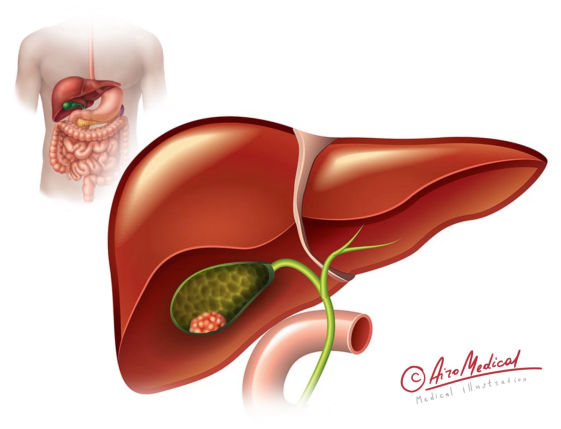 Most cases of gallbladder cancer originate from the following parts
Most cases of gallbladder cancer originate from the following parts
- Fundus (up to 60%)
- Body (up to 30%)
- Neck (up to 10%)
Because gallbladder cells can synthesize and excrete active chemical substances, most gallbladder tumors are appeared to be neuroendocrine tumors. For example, up to 90% of all gallbladder cancer cases were confirmed as adenocarcinomas. Still, surgeons might discover other histological types of gallbladder tumors too. Rare (only 72 patients described in medical literature) mixed gallbladder cancer cases of neuroendocrine-non-neuroendocrine are also being reported.
Also, oncologists report cases of metastatic gallbladder cancer. This gallbladder tumor type considering pretty rare but still possible. Adenocarcinomas tend to become a source of gallbladder cancer 50% more often than other histological tumor types.
Frequent sites of primary tumors for metastatic gallbladder cancer
- Gastric cancer (up to 39%)
- Liver cancer (up to 15%)
- Colorectal cancer (up to 10%)
 What causes gallbladder cancer?
What causes gallbladder cancer?
Scientists and doctors still have yet to find a single reason that causes gallbladder cancer. Nowadays, most think that any gallbladder tumor's development is equally related to the impact of genetic and environmental factors. Still, a few risk factors might help patients know about more remarkable changes to develop gallbladder cancer.
Risk factors
- Gender. For some reason, there are more women than men among the patients with gallbladder cancer. Women are affected 2-6 times more often in certain countries than men.
- Age. Unfortunately, studies show that older people are more likely to develop gallbladder tumors. The most dangerous ages related to gallbladder tumor development are between 50-60 and 70-80.
- Ethnicity. The number of gallbladder cancer cases is relatively higher among the residents of Germany, Poland, Hungary, Asia, Chile, and Latin America. Also, American Indians have more chances to develop a gallbladder tumor (average 8.9 cases per 100,000 people) than breast tumor (average 8.7 cases per 100,000 people) or pancreatic cancer (7.4 cases per 100,000 people).
- Gallstones and gallstone disease. Gallstones are an essential risk factor for patients with gallbladder tumors. In up to 85% of gallbladder cancer cases, surgeons also find gallstones in the patient's gallbladder.
- Chronic inflammation and infections. Both chronic inflammations and infections of the hepatic-biliary tract significantly increase the risks of gallbladder cancer development. Helicobacter and Salmonella are among the most often causes of tumor-related inflammation.
- Obesity. Obesity and metabolic syndrome both significantly increase the risk of gallbladder cancer. For every excessive 5 points of BMI (body mass index), the probability of gallbladder tumor development increases by 1.09 for men and 1.59 for women.
- Gallbladder polyps. Only about 4% of gallbladder polyps show signs of adenomas from the beginning of their discovery. Also, up to 30% of benign polyps might result in gallbladder cancer in the future. Sometimes polyps might look very similar to cancer. Therefore, they also could be misdiagnosed, and patients might accidentally get a diagnosis of a malignant gallbladder tumor.
Also, studies show strong relations between various innate diseases of the hepatic-biliary tract and gallbladder cancer. For example, patients with biliary cysts have up to 70% more likely to develop a gallbladder tumor. Yet, no studies showed a significant impact of alcohol consumption and smoking on the chances of getting gallbladder cancer.
How to prevent a gallbladder tumor?
Unfortunately, patients can't avoid or influence many risk factors (e.g., sex, age, and ethnicity). Still, some actions can help them to decrease the potential risks.
Among those actions are the following:
- Timely treatment of associated diseases. Any appropriate treatment for gallstone disease, gallbladder polyps, and other gallbladder tumor-related diseases significantly decreases the risk of malignancy.
- Decreasing body weight. Losing body weight helps to reduce the possibility of gallbladder tumor development. The chances decrease ratio is strongly related to the amount of lost weight.
- Adequate diet. Avoiding excessive amounts of fats, sugar, and red meat in the everyday diet helps to decrease the probability of gallbladder cancer.
 Symptoms of gallbladder cancer
Symptoms of gallbladder cancer
Gallbladder cancer often being discovered incidentally during a cholecystectomy due to other reasons. Unfortunately, in many cases, it happens in both early and advanced stages. Mostly, this is related to the fact that many patients who develop a gallbladder tumor remain asymptomatic for a long time or demonstrate vague symptoms that many gastroenterologists might consider as symptoms of other pathologies.
Typical gallbladder cancer signs
- Abdominal pain. About 64% of patients diagnosed with gallbladder tumors develop abdominal pain during the disease. In most cases, the pain was located on the right side of the abdomen, but sometimes it might migrate all over the stomach and lower and middle back.
- Nausea or vomiting. Highly unspecific symptoms that are mostly related to various problems with fat digestion. Still, up to 45% of patients with gallbladder cancer develop these symptoms.
- Jaundice. Sometimes, bile ducts might be squeezed by a gallbladder tumor or gallstones. As a result, amounts of bilirubin (one of the main components of the bile) in the patient's serum began to increase, and signs of jaundice started to appear. They include yellowish scleras and skin, clay-like stool, and dark urine. Up to 37% of patients with gallbladder cancer develop jaundice.
- Weight loss. Weight loss commonly appears in the late stages of gallbladder cancer. Up to 10% of patients develop this system.
- Palpable mass. Only up to 5% of patients with a gallbladder tumor show palpable mass during an examination.
Gallbladder cancer signs might also include weakness, appetite loss, and anorexia. In most cases, symptoms start to show in the advanced stages of the gallbladder tumor. That's why it's always important to undergo regular check-ups to determine possible gallbladder cancer in its early stages. Also, gallbladder polyps cancer symptoms are the same as described above.
 Diagnostic tests for gallbladder cancer
Diagnostic tests for gallbladder cancer
As a gallbladder tumor might often remain asymptomatic for a long time, regular lab tests and medical imaging procedures become one of the most valuable early diagnosis methods.
The most effective lab test to determine a gallbladder tumor
- Comprehensive metabolic panel. Various substances' amounts are measured in the patient's blood serum during this lab test, including bilirubin. As a result, doctors might detect increased bilirubin levels and prescribe additional tests.
- Tumor markers. In most cases, tumor markers are rarely used to confirm a case of gallbladder tumor due to lack of specificity. Still, they might give valuable information to continue the further examination.
- Abdominal ultrasound. Historically, ultrasound imaging considers one of the best ways to suspect gallbladder cancer. The endoscopic ultrasound examination is more accurate compared to traditional ultrasound (97% of efficiency compared to 76% efficiency).
- MRI and CT. Those medical imaging procedures are especially valuable in detecting metastatic gallbladder cancer and accurate staging.
- PET-CT. Patients got an injection of fluoric dye and underwent complete body scanning during PET-CT. As a result, even the most distant and smallest metastases could be revealed.
- Biopsy. Biopsy remains the most accurate test that helps to identify a histological type of gallbladder tumor. Often, doctors can't do a biopsy before surgery and send the whole gallbladder tumor for histological examination after removal.
Stages of gallbladder cancer
TNM system remains in most countries preferred for a gallbladder tumor staging process. "T" stands for "tumor" and represents the basic features of a gallbladder tumor, including volume, size, and relation to surrounding organs. "N" stands for "nodes" and showcases the state of the nearest lymphatic vessels and nodes. Finally, "M" stands for "metastases" and showcases the presence of metastatic lesions all around the organism.
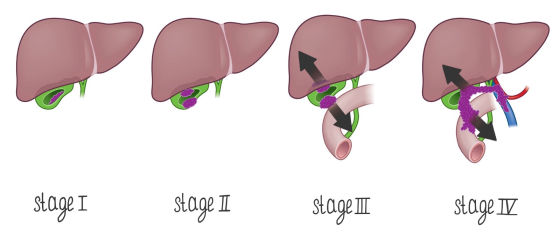
There are four stages of gallbladder cancer, and the staging process includes the evaluation of each of the three components named above. In cases when correct staging isn't possible for specific reasons, doctors usually talk about stage x. Unfortunately, in the early stages, only 1 of 5 gallbladder cancer is diagnosed in the USA, and about 20% of cases remain with unspecified stages. Also, the so-called 0 stage of gallbladder cancer represents carcinoma in situ. It’s a gallbladder tumor that didn’t grow because its cells die at the same speed as new ones appear.
Best place for treatment of gallbladder cancer
 Gallbladder cancer treatment options
Gallbladder cancer treatment options
There are many options for treating gallbladder cancer, and the surgical method traditionally remains among the most effective. But unfortunately, it's not always possible to effectively remove the gallbladder tumor, especially in the advanced stages of the disease. As a result, only about 10% of patients with newly diagnosed gallbladder cancer can undergo surgery without previous preparation.
Also, combined treatment is always the best choice if the patient with gallbladder cancer develops distant or multiple metastatic lesions.
The list of the most basic gallbladder cancer treatments
- Open gallbladder removal surgery. About 11,8% of modern-era patients with gallbladder tumors undergo open surgery. This approach allows surgeons to examine surrounding organs and tissues effectively and increase the possibility of detecting any additional issues.
- Laparoscopic gallbladder removal surgery. A laparoscopic approach is used in 84,02% of gallbladder cancer cases who undergo surgical treatment. In addition, laparoscopic surgery traditionally shows fewer complications compared with open surgery.
- Chemotherapy. Chemotherapy is a frequently used recurrent and metastatic gallbladder cancer treatment method. Oncologists might subscribe different medicines, depending on the histological type of gallbladder tumor, the patient's condition, and other factors. On average, gallbladder cancer shows a 20-60% response rate during chemotherapy.
- Immunotherapy. Doctors often might try to reinforce the patient's immune system response against gallbladder cancer cells with various methods of immunotherapy. The method is especially effective with chemotherapy (their combination shows up to an 85% response rate).
- Targeted therapy. Targeted therapy aims at specific chemical substances necessary for the adequate development and growth of gallbladder cancer. For now, 20 different methods of targeted therapy have been developed to treat gallbladder tumors.
- Radiotherapy. Radiotherapy can be very useful as a part of adjuvant therapy (usually prescribed after surgical treatment to prevent relapses) or combined therapy. For example, patients with advanced gallbladder cancer undergoing surgery and radiotherapy show up to 30% longer median survival than those with only surgery.
Certified hospitals for gallbladder cancer treatment
 New treatment for gallbladder cancer
New treatment for gallbladder cancer
Every day more and more different methods of gallbladder cancer treatment develop worldwide. But unfortunately, most of those methods require more time to become widely available.
In addition, medical practitioners need additional time to learn how they work and finances to buy all necessary equipment and medical consumables. Still, patients must be familiar with those new options to get the best possible treatment.
New treatment options for gallbladder cancer
- Robotic-assisted Da Vinci gallbladder removal surgery. Da Vinci system is the most advanced robotic apparatus for laparoscopic surgery. In general, surgeries performed with the help of the Da Vinci system were associated with better pain control (up to 20% better) and early hospital discharge compared to traditional laparoscopic surgery.
- Intraluminal transcatheter brachytherapy. Interventional radiologists place a small ionizing exposure source inside the gallbladder tumor via a catheter from the duodenum or a small incision on the skin and the liver's surface during intraluminal transcatheter brachytherapy.
- Ablation and NanoKnife. Ablation uses various energy sources and helps to stop the blood supply and, as a result, prevents gallbladder cancer growth and development. NanoKnife is the newest and the most advanced apparatus for irreversible electroporation ablation showing up to 94% less recurrence rate than traditional ablation methods.
- Dendritic cell-based cancer vaccine. The dendritic cell-based cancer vaccine is one of the immunotherapy methods that help to activate a patient's immune system to fight gallbladder cancer development. Over 33% of patients reported a significant improvement in their condition after getting a dendritic cell-based vaccine.
- Radiosurgery (GammaKnife and CyberKnife). Radiosurgery is the most complex and effective method of radiotherapy. During radiosurgery, doctors use complex apparatuses that point focused beams (up to 200 for GammaKnife and up to 1400 for CyberKnife) of ionizing exposure on the primary gallbladder cancer site and metastatic lesions. Patients with gallbladder cancer who undergo CyberKnife surgery show a 79-100% of tumor size local control rate during the following year.
- Proton therapy. Proton therapy is similar to radiotherapy but uses focused beams of protons instead of radiation exposure. This method is traditionally associated with lower damage to healthy tissues than radiation therapy.
- Local chemotherapy. Oncologists find out that local delivery of chemotherapy medications directly to the gallbladder cancer site can significantly improve treatment results. First, a small catheter is inserted inside the patient's blood vessels, reaching the gallbladder tumor's primary location. Then, portions of chemotherapy medications are delivered through the catheter.
- Cytoreductive surgery with hyperthermic intraperitoneal chemotherapy (HIPEC). Combining those methods can reduce metastatic cancer lesions inside the abdomen and peritoneum, including cases with primary gallbladder tumors. Up to 59% of patients with metastatic gallbladder cancer who undergo those two procedures passed the 3-year surveillance rate.
- Pressurized intraperitoneal aerosol chemotherapy (PIPAC). After a small insufflation of CO2 in the abdomen, surgeons insert two tubes inside the belly. Then a small nebulizer is inserted via the first tube, spraying aerosol medications. After 30 minutes, the aerosol is evacuated through the second tube. Pressurized intraperitoneal aerosol chemotherapy is an excellent treatment for gallbladder cancer with abdominal metastatic lesions.
- Cryotherapy. In most cases, local cryotherapy is a great way to decrease the probability of gallbladder cancer relapses and uses as an alternative to radiotherapy. Cryoablation and cryosurgery, in turn, can be used to treat a primary liver and gallbladder tumor. Cryosurgery shows 90% technical success as a treatment method for liver and gallbladder tumors.
- Infiltrating lymphocytes therapy (TIL). During TIL, doctors take lymphocytes from the primary tumor's location and grow them in the lab with further genetic improvement. After that, newly grown lymphocytes are inserted in the gallbladder tumor.
- CAR T-cell therapy. CAR T-cell therapy is a method of immune therapy that requires a patient's T-cells. After T-cells are collected from the patient's blood, medical practitioners enhance them in the laboratory and reinsert them into their blood vessels. As a result, the patient's immune system becomes more active against gallbladder cancer cells.
Many alternative treatments for gallbladder cancer undergo various stages of clinical trials and are awaiting approval. As a result, many curators, treatment methods authors, and medical practitioners are looking for patients with gallbladder cancer that can help them evaluate their methods' efficiency. AiroMedical will be glad to help you determine if your case might be applicable for participation in clinical trials.
Leading doctors for gallbladder cancer
 Gallbladder cancer statistics and prognosis
Gallbladder cancer statistics and prognosis
Unfortunately, the prognosis for those patients is moderately poor due to significant issues with the timely diagnostic process and the fact that most gallbladder cancer cases are discovered only at advanced stages.
Stage 4 gallbladder cancer life expectancy without treatment does not exceed 4-5 months. Here is the data chart of the median 5-year survival rate for gallbladder cancer patients with different stages:
- Stage 0 (carcinoma in situ) - 81%
- Stage I - 50%
- Stage II - 29%
- Stage III - 8%
- Stage IV - 3%
It's important to understand that a lot depends on the chosen treatment method and the following monitoring of the patient's condition. AiroMedical will gladly help every patient with gallbladder cancer to develop the best treatment plan and discover the newest and most effective treatment options worldwide. AiroMedical has an extensive database of certified medical practitioners, hospitals, and clinics with significant experience treating gallbladder cancer and will help to discover the most suitable option for your case.
References:
- Sturm N, Schuhbaur JS, Hüttner F, Perkhofer L, Ettrich TJ. Gallbladder Cancer: Current Multimodality Treatment Concepts and Future Directions. Cancers (Basel). 2022;14(22):5580. Published 2022 Nov 14. doi:10.3390/cancers14225580
- Halaseh SA, Halaseh S, Shakman R. A Review of the Etiology and Epidemiology of Gallbladder Cancer: What You Need to Know. Cureus. 2022;14(8):e28260. Published 2022 Aug 22. doi:10.7759/cureus.28260
- Fong Y, Jarnagin W, Blumgart LH. Gallbladder cancer: comparison of patients presenting initially for definitive operation with those presenting after the prior noncurative intervention. Ann Surg. 2000;232(4):557-569. doi:10.1097/00000658-200010000-00011
- Hundal R, Shaffer EA. Gallbladder cancer: epidemiology and outcome. Clin Epidemiol. 2014;6:99-109. Published 2014 Mar 7. doi:10.2147/CLEP.S37357
- Hariharan D, Saied A, Kocher HM. Analysis of mortality rates for gallbladder cancer across the world. HPB (Oxford). 2008;10(5):327-331. doi:10.1080/13651820802007464
- Rawla P, Sunkara T, Thandra KC, Barsouk A. Epidemiology of gallbladder cancer. Clin Exp Hepatol. 2019;5(2):93-102. doi:10.5114/ceh.2019.85166
